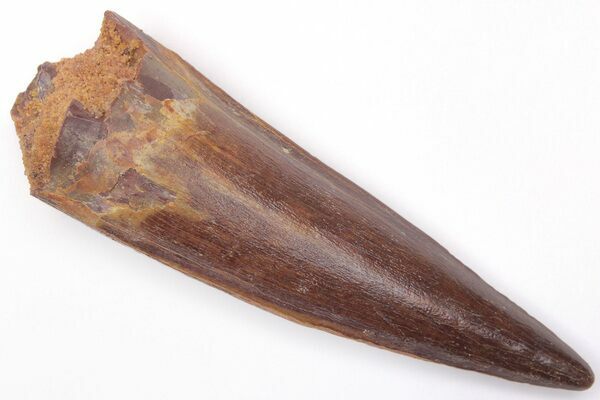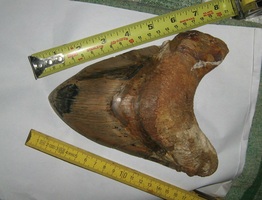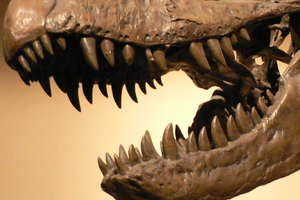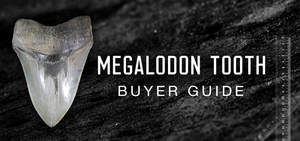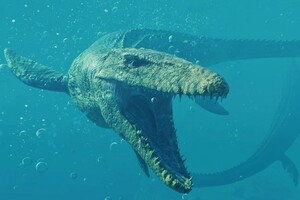Spinosaurus Tooth Buyers Guide
Have you ever wanted to own a real, fossil dinosaur tooth? Believe it or not but you can buy a tooth of Spinosaurus, the largest known meat-eating dinosaur for as cheap as $20. Spinosaurus teeth are some of the most inexpensive dinosaur teeth that you can buy. Nearly all of the commercially available Spinosaurus teeth are collected from the Kem Kem Beds in Eastern Morocco by local villagers who derive the bulk of their annual income from the sale of these fossils.
What Makes Spinosaurus Teeth So Common and Inexpensive?
Spinosaurus shed its teeth in an area that was optimal for fossilization. The teeth quickly became buried in mud and sand in the river delta preserving them.
What do spinosaurus teeth look like?
The teeth of Spinosaurus were specially adapted for catching fish and other aquatic prey. Unlike many meat-eating dinosaurs that had serrated, knife-like teeth the teeth of Spinosaurus were smooth and conical. Their teeth looked much more like the teeth of many crocodiles and their upper and lower jaws could interlock to help them hold onto fish. Teeth of juvenile Spinosaurus could be as small as about an inch in length, while teeth of full grown adults might reach 5-6 inches, not including the root.
How much do Spinosaurus teeth cost?
Generally speaking, small Spinosaurus teeth will be quite cheap. You can find decent quality 2 inch teeth available online in the $20-40 range. Larger teeth are much harder to find intact so the price can go up quickly. A nice tooth in the 3-4 inch range often will sell in the range of $100-500 depending on the exact size, quality, and amount of repairs or restoration. You have to be particularly careful in evaluating teeth larger than 3” as the majority being sold are heavily restored or composites of multiple, partial teeth.
How are Spinosaurus teeth priced?
Size - Size is one of the most important factors in pricing. Teeth get exponentially more rare as they get larger. So while a 2” tooth will be very common, intact 4” teeth are quite rare. I would estimate out of the ten thousands or so teeth we’ve sold, less than 0.5% are over 4” and most are under 2”
Feeding Wear - Most spinosaurus teeth and in particular larger teeth will have extensive feeding wear to the tip. Instead of the tooth coming to a point like a spear, the tooth tip of the tooth will be ground down to a nub. I would estimate that less than 5% of the teeth I get are free of any feeding wear, so these teeth sell for a lot more money. The more extensive the feeding wear, the lower the price of the tooth.
Enamel Quality - The quality of the enamel on the tooth will heavily influence price. Most teeth have significant enamel chipping, or worn enamel so these teeth with pristine enamel will sell for significantly more money.
Repair, Restoration & Compositing - Spinosaurus teeth are fragile and most (particularly larger teeth) are broken while they are in the ground by geological forces or during collection. Most teeth will have some repair work to glue the pieces back together. Sometimes there are gaps in the cracks that are filled in, referred to as gap fill restoration. Other times restoration will be much more extensive such as recreating worn enamel, a broken tip or filling in missing areas to make a tooth look more aesthetic. Sometimes unscrupulous diggers or preparitors will combine multiple broken/partial teeth to make a larger, “frankentooth”. The degree of repair, restoration, or compositing will have a significant impact on price and should always be disclosed by a seller. Unfortunately few sellers do disclose this.
Should I buy a restored or composite tooth?
While collectors may highly covet that perfect tooth which does not have any restoration it might not be an important factor for someone you just want to own a big dinosaur tooth. Particularly if you are buying a gift for a kid, these heavily restored or composited teeth provide an opportunity to acquire a large Spinosaurus tooth at the fraction of the cost of a collector quality specimen. For example you can often find a heavily restored or composite 3 inch Spinosaurus tooth in the range of $50-100 where one with little to no restoration will be in the $100-500 range.
Again, disclosure is key so people know what they are getting and can evaluate the price they are paying. We choose to sell both collector quality teeth and less expensive restored/composited teeth, so that people can decide what they want based on their budget. We always disclose repair, restoration and compositing on Spinosaurus teeth in the listings and price them to properly reflect any of this work.
Other Dinosaur Teeth From the Kem Kem Beds
In addition to Spinosaurus, teeth of several other large dinosaurs are available from the Kem Kem Beds of Morocco. Just like with Spinosaurus teeth, the number of people digging them makes them inexpensive compared to fossil dinosaur teeth from other areas. These include the large, serrated teeth of Carcharodontosaurus, another giant meat-eating dinosaur. Smaller, serrated teeth of an Abelisaur, typically sold as “raptor teeth”, fossil sauropod dinosaur teeth and fossil pterosaur teeth.
 Reviews
Reviews

